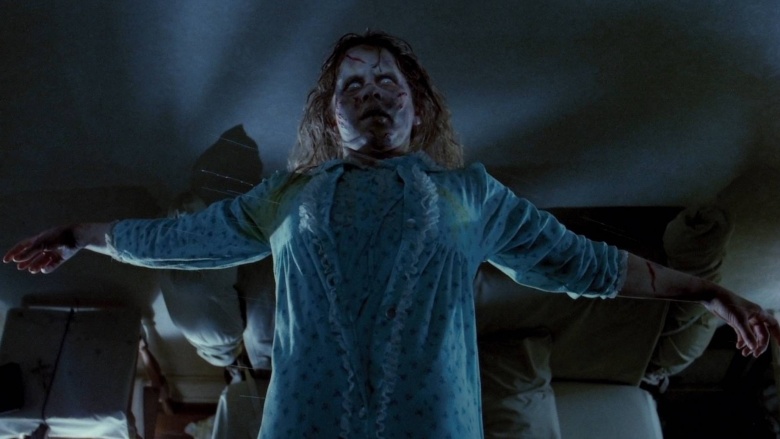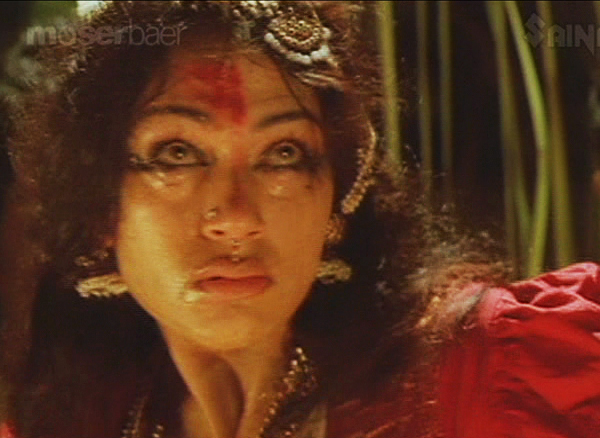

In the late 90s, when I lived with my friends in the campus dorm, we decided to watch the ‘scariest movie in the world’- ‘The Exorcist’. Back then, the closest web portal was sheltered inside some internet cafe in Calicut city, forty kilometers away. To watch the film, my friends and I rented out a television set, a VHS player and the videotape of the movie. Inside a room situated at the far end of the dorm, close to the common washrooms, we packed the chairs in theater seating style. Pregnant with anticipation, we sat breath close. Owing to the hordes of swearing fans, I was aware of the movie’s archetypal scenes – the head spin, the spider walk, the puking, the levitation . But, like the Grand Canyon, you haven’t seen it until you have seen it. The planned viewing was fraught with risks- the possibility of power outage, the danger that the tape might veer off the cogs and twist itself into a series of contortions and the peril of lightning setting fire to the TV.
Surmounting all the uncertainties, against a wall cluttered with posters of voluptuous Bollywood women, in the midst of billows of nicotine charged smoke, we watched ‘The Exorcist’. The film was frightening. When the tension grew unbearable, my classmate Mathew enshrouded his face in his hands to find solace in occasional breaks. Yet, he couldn’t resist himself from continuing . When the possessed girl blurted out a fusillade of blasphemies, he shrieked in distress. To take a breather, he pleaded with us to temporarily pause the movie. We ignored the appeal to his chagrin and resumed with the scarefest.
I loved the movie for its bizarre plot and drama but found the horror element unsatisfactory. The film neither disturbed me nor engaged me on a spiritual realm. I believed that the best of horror connected us to our inner self. My gold standard in horror was the Stephen King novel Pet Sematary. The novel concerned with the loss of pets, the death of loved ones and the trauma of loved ones turning into sinister and depraved beings. The novel was so bleak that after reading it, I remained stuck in a virtual haze, with the world loomed up around me. The evil stayed close. In ‘The Exorcist’, however, the evil manifested itself as an other-worldly phenomenon. A thing that transcended our temporal existence.
But, how could the same film evoke a flustered reaction in Mathew, but barely manage to trouble me? I surmised that the divergent responses were due to the difference in cultural environs. For a devout Catholic like Mathew, the Devil is the epicenter of all the evil and the cause of all human degeneracy. For him, the Devil who possessed the girl in the film is as tangible as the air he respired. But not for me.
I come from a Hindu milieu where evil does not originate, it lives- behind the fragrant flowering shrubs, inside the dark corners of the grove, just below the surface of the pond. The evil is a slice of nature and is not induced by a specific supernatural entity like the Devil. Unnatural death- death by murder, suicide or drowning- is a common source of evil. At times, the evil takes the form of emotions and unfulfilled desires of spirits that stay back to torment the living. It can also be a curse or a rage invoked by a sorcerer or a wizard. Like the good, the evil is immanent to human existence.
I observed that the Japanese idea of evil is similar to the Indian one. The Japanese have a very old tradition of horror fiction. In Japanese art, the evil is often bound to a place or a thing- such as a well or a lock of hair. Joru Gomu is a Japanese monster who seduces men and later devours them for dinner. In some versions, at night the seductress lies in wait for her prey along isolated jungle pathways frequented by long distance travelers. She holds a baby close to her bosom. When the victim approaches, the monster implores him to help her hold the baby. When he receives the baby, he discovers that the infant is made of a teeming colony of spiderlings. That is when the monster reveals herself.
The myth of Joru Gomu reminds me of the Indian vampiress known as the Yakshi. She attracts wayfarers by requesting them to give her a lump of slaked lime to spice up her paan- a South Asian stimulant. But the smart traveler would smear the lime on the blade of his pocketknife and offer it to her. The vampiress would be repelled by the action since their tribe is allergic to metal. The Yakshi would trap the naive traveler though, and siphon off his entire blood stock.
Many of the Western monsters like the vampires, witches and werewolves do not comply with the Catholic concept of evil. I presume that these myths are the remnants of the pagan past of Western European civilization. Like divinities, evil is culture specific. Over the differences in evil, however, humans don’t go to war. That’s the good thing about evil.
